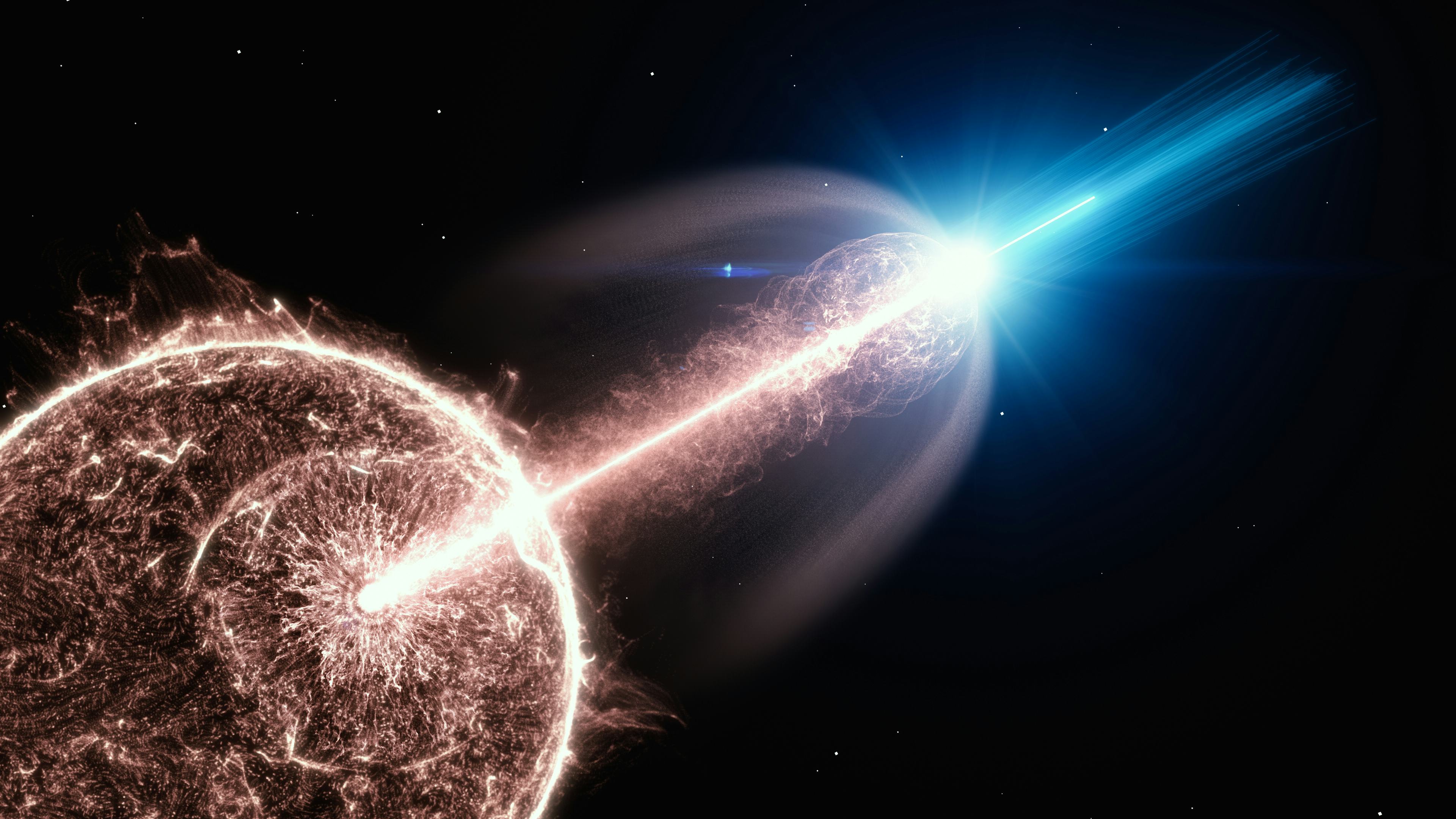
In 2007, a team of astronomers in Australia detected an incredibly powerful radio pulse. It was so powerful, in fact, that they didn’t believe it was real.
The strange signal from deep space came from a galaxy located billions of light years away and released the equivalent amount of energy that the Sun produces in 80 years in the course of a small fraction of a second.
The detection at the Murriyang Telescope marked the discovery of the first fast radio burst, enigmatic and powerful radio signals lasting mere milliseconds. They’re so elusive and short-lived that since 2007, only 140 had been detected.
But in new research announced at the (virtual) 238th meeting of the American Astronomical Society, a team from the Canadian Hydrogen Intensity Mapping Experiment (CHIME) collaboration announced that by honing in on the right ways of searching for these cosmic phantoms, they’ve quadrupled the known number.
In doing so, they opened up a huge opportunity to understand not just these bursts, but the very structure of the universe, measuring how much gas and matter they make their way through on their path toward Earth.
The scientists behind the discovery presented their work on Wednesday at the 238th American Astronomical Society (AAS) Meeting.
WHAT’S NEW — The research presented at AAS marked the results of just the first year of the CHIME collaboration, with more exciting results to come. In that time, they were able to discover a total 535 fast radio bursts, evenly distributed across the sky — meaning that whatever forms them, it’s likely to be a fairly common phenomenon.
From the data, the scientists were able to estimate that fast radio bursts occur at a rate of about 800 per day across the entire sky. More facilities like CHIME will be needed to track down more of these bursts.
“The thing about FRBs is that they are really hard to catch,” Kiyoshi Masui, assistant professor of physics at MIT and CHIME collaborator, said in a press conference. “You have to have your radio telescope pointed at just the right place, at just the right time and you can't predict where or when that will be.”
The newly discovered FRBs also seemed to fall under two categories: repeating and non-repeating. Eighteen of them burst repeatedly, with each of the bursts lasting a little longer and emitting more focused radio frequencies, while the rest only burst once. The repeaters accounted for 60 total bursts.
HERE’S THE BACKGROUND — Although they are common throughout the universe, scientists are still not quite sure where radio bursts come from.
The most popular theory suggests that FRBs come from neutron stars, the collapsed cores of massive stars. Scientists believe that the explosions could be a result of a specific type of neutron star known as a magnetar, named so for their powerful magnetic fields, thousands of trillions of times more powerful than Earth’s fields.
“The reason we think that's true is because they are the only thing that we know of that could plausibly produce such energetic flashes in such a short duration of time,” Masui said. “Otherwise, we don't really know how they're created.”
Located at the Dominion Radio Astrophysical Observatory in British Columbia, Canada, the CHIME telescope began operating in 2018. The stationary telescope is made up of four giant cylindrical radio antennas.
This enabled the international team of researchers to capture a large number of FRBs.
Although FRBs are not uncommon, most radio telescopes only look at one tiny patch of the sky, about the size of the Moon, at a given time. But the CHIME telescope covers hundreds of square degrees of the sky simultaneously, or the equivalent of a thousand times the area of the Moon, according to Masui.
WHY IT MATTERS — The field of studying FRBs is expanding as scientists discover more of these bright radio flashes that could essentially inform them of the entire structure of the surrounding universe.
As a fast radio burst travels through space, it gets distorted by the plasma and gas of the cosmos.
“We can measure this distortion very, very precisely,” Masui says. “So for every one of these bursts, we know exactly how much matter it passed through.”
“It carries a record within it of the structure of the universe that it has traveled through on its way to get from the source to us,” he adds.
By using FRBs, scientists can essentially map out all the matter that lies in the universe and the very structure of the cosmos.
“With enough of them, they are going to be the ultimate tool for mapping the universe,” Masui says.
What’s next — The researchers are currently on the lookout for more FRBs to add to their catalog in order to help them construct a map of the universe. CHIME aims on detecting dozens of radio bursts a day, significantly increasing the known number of these mysterious flashes.





